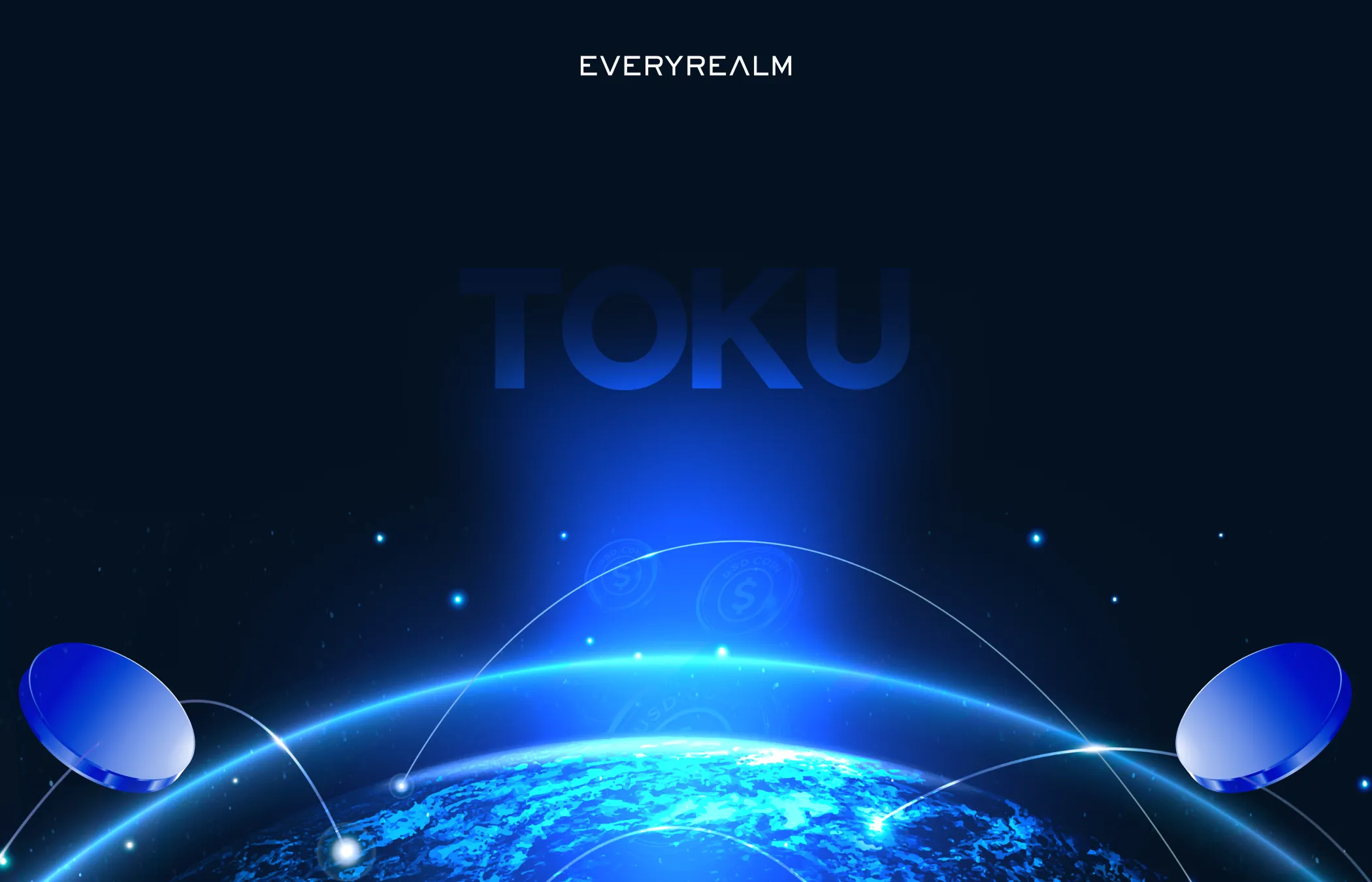
How to Design and Set Up a Token Compensation Plan (Step-by-Step Guide)
Learn how to design, structure, and implement compliant token compensation plans across jurisdictions. Step-by-step guidance from Toku, the global leader in token grant administration.
.avif)
.avif)
Designing a compliant and effective token compensation plan is far more complex than simply deciding how many tokens to distribute. It requires meticulous planning, deep legal understanding, and careful tax alignment across multiple jurisdictions. As crypto companies scale globally, they must navigate an evolving landscape of employment laws, tax frameworks, and securities regulations — all while maintaining operational efficiency and motivating their teams.
In Toku’s Employer’s Guide to Token Compensation, we explored what token-based pay means and why it’s rapidly becoming the new standard for Web3 organizations. Now, we go a step further. This article dives into the execution — how to actually design, implement, and manage a fully compliant token compensation plan from start to finish.
Drawing from our experience working with industry leaders like Protocol Labs and Gnosis, Toku offers a practical, step-by-step framework to help founders, CFOs, and HR leaders set up their token grant programs correctly. Along the way, we’ll highlight common mistakes organizations make, lessons learned from early adopters, and best practices to ensure your plan remains compliant, scalable, and efficient as your company grows.
Step 1: Allocate Tokens into the Token Grant Pool
Before a single grant is issued or a vesting schedule is set, every organization must first determine how many tokens it is willing to allocate to its team. This foundational step—establishing your token grant pool—directly affects long-term tokenomics, employee motivation, and investor perception.
The token grant pool acts as a reserve of tokens that will be used to reward employees, advisors, and contractors through structured token grants. Like an equity option pool in traditional startups, it defines how much ownership and incentive power your organization is prepared to share with its contributors.
Key Factors to Consider
When determining your pool size, several variables come into play:
- Allocation: Decide what percentage of your total token supply will go toward compensation. This reflects how heavily your project relies on talent-driven growth and retention incentives.
- Price and Value: Estimate the fiat value (e.g., in USD) of the tokens that will be distributed to each participant. A clear valuation is essential for communicating offers and ensuring compliance with tax reporting.
- Participants: Consider both current and future team members. If you expect to scale rapidly, build in room for future hires so you don’t have to expand the pool prematurely.
- Impact on Tokenomics: Remember that any allocation from the treasury will affect circulating supply and investor sentiment. Balance compensation needs with overall ecosystem stability.
Common Practices
Most organizations plan ahead during their tokenomics design and include a dedicated reserve of tokens for compensation. While there’s no universal standard, it’s common to see 10% to 30% of the total token supply allocated for this purpose.
If your project doesn’t have a pre-defined compensation reserve, you can choose one of two approaches:
- Allocate Existing Tokens: Redirect a portion of tokens held in your treasury to the compensation pool. This approach works well if the treasury balance comfortably supports operational and incentive needs.
- Issue New Tokens: Mint additional tokens specifically for compensation purposes. While this option provides flexibility, it can lead to dilution — so it must be weighed carefully against your token’s market dynamics and investor expectations.
Best Practice
Before finalizing your allocation, work with your tokenomics advisor, legal counsel, and finance team to model different scenarios. Forecast how the pool will be used over time and ensure your organization has clear policies governing how token grants are approved, vested, and reported.
Establishing the token pool early ensures your compensation strategy remains scalable, transparent, and fully aligned with both your business objectives and your long-term regulatory obligations.
Step 2: Determine Token Grant Details
Once your organization has defined the token grant pool, the next step is to design a structured, compliant framework for how those tokens will be distributed, vested, and managed. This framework is formalized in your token grant plan—a strategic document that establishes rules, eligibility, and processes for all grants.
A well-designed token plan ensures consistency, legal compliance, and transparency—preventing future disputes and regulatory risks as your team and token value grow.
7 Core Elements of a Token Grant Plan
A token grant plan typically includes the following components:
- Eligibility Criteria – Who qualifies for token grants
- Token Grant Structure – What form the grants will take (e.g., RTUs, RTAs, Token Options)
- Vesting Schedule – How and when tokens are earned
- Valuation Methodology – How token value is determined pre- and post-launch
- Distribution Process – When and how vested tokens are delivered
- Termination & Clawback Rules – What happens if employment ends early
- Governing Law and Reporting – Which jurisdiction governs the agreements
Each element must be carefully considered, localized, and documented to ensure both compliance and alignment with your organization’s goals.
1. Eligibility Criteria
Define who is eligible for token grants. Common eligibility factors include:
- Employment status: Full-time, part-time, or contractor
- Tenure: Often limited to team members who have completed probation or a minimum service period
- Contribution type: Key contributors such as engineers, executives, or early builders may be prioritized
Clear eligibility rules prevent misunderstandings and promote fairness in distribution.
2. Token Grant Structure
Decide which type of token grant agreement will be used. The four most common structures are:
- Restricted Token Awards (RTAs) – Tokens transferred immediately with restrictions
- Restricted Token Units (RTUs) – Tokens granted but delivered only upon vesting
- Token Options – Right to purchase tokens at a set price
- Token Purchase Agreements (TPAs) – Tokens purchased at grant to reduce taxable income
Each structure carries different tax, legal, and operational implications. Some are better suited for pre-launch environments (e.g., RTAs, TPAs), while others fit post-launch organizations (e.g., RTUs).
If your team is globally distributed, consider how local jurisdictions define ownership and taxation—a single grant structure may not work everywhere.
3. Vesting Schedule
Vesting incentivizes long-term commitment and aligns employee interests with the project’s success.
Common best practices:
- Standard schedule: 4-year vesting with a 1-year cliff
- Linear vesting: Monthly or quarterly vesting after the cliff
- Milestone-based vesting: Linked to specific deliverables or project launches
Be mindful of jurisdictional nuances — for example, Canada’s “3-year delivery” rule under the Income Tax Act limits deferrals, and some EU countries require specific notice clauses.
All vesting terms should be explicitly outlined in the token grant agreement.
4. Valuation Methods (Pre- and Post-Launch)
Accurate valuation is essential for both compliance and communication.
- Pre-launch: When no market exists, organizations often engage third-party valuation firms to establish a fair value based on financial models (DCF, comparable projects, or NVT ratios).
- Post-launch: Tokens are typically valued using exchange rates or average market prices published on major crypto indices or blockchain explorers.
Valuation impacts tax reporting, employee expectations, and investor relations—making consistency critical.
5. Token Distribution
Define how and when tokens are delivered to recipients.
Some organizations transfer tokens immediately after vesting; others impose lock-up periods or on-chain restrictions for liquidity control or compliance purposes.
The process should include:
- Secure custody (multi-sig or escrow wallets)
- Tax withholding and fiat remittance procedures
- Transparent communication with recipients
Clear post-vesting communication ensures employees understand their obligations, vesting timeline, and tax responsibilities.
6. Termination and Clawback Provisions
Establish rules for what happens if an employee leaves before tokens are fully vested:
- Voluntary resignation: Typically results in forfeiture of unvested tokens
- Involuntary termination: May allow partial vesting acceleration or forfeiture, depending on cause
- Clawbacks: Allow the company to reclaim vested tokens in cases of fraud, policy breaches, or misconduct
These provisions protect the organization and reinforce accountability.
7. Governing Law and Reporting
Your agreements should clearly specify the governing jurisdiction and legal forum for disputes.
Additionally, define how and when grants must be reported to tax authorities in each employee’s country — requirements vary widely between the U.S., EU, and APAC.
Why It Matters
Designing a compliant token grant plan isn’t just about documentation—it’s about setting up a system that scales legally, financially, and operationally.
By standardizing eligibility, structure, vesting, and compliance processes now, your organization avoids the costly mistakes that plague early-stage crypto teams as they expand globally.
Step 3: Draft and Localize the Token Grant Agreement
Once your token plan framework is in place, the next step is to draft and localize individual token grant agreements. These are the legal documents that formalize the relationship between your organization (the grantor) and each grant recipient (employee, advisor, or contractor).
This is the stage where your token plan becomes a legally enforceable contract — defining ownership rights, tax treatment, vesting triggers, and the governing laws that apply.
Getting this step right is crucial to protecting both your organization and your workforce.
Why Localization Matters
Every jurisdiction has its own definition of what constitutes compensation, income, and security.
A token grant agreement that is compliant in the U.S. may not be enforceable — or even legal — in countries like Germany, Singapore, or Japan.
Localization ensures that:
- Tax obligations are properly addressed for both employer and employee
- Labor laws (e.g., minimum wage, benefits, deferred compensation) are met
- Token classification (security, utility, or other) aligns with regional regulations
- The agreement remains valid and enforceable in court
In short, localization bridges the gap between your token strategy and real-world compliance.
9 Key Components of a Token Grant Agreement
Each agreement should include detailed clauses covering the following:
- Parties and Purpose: Identify the grantor (company, foundation, or DAO) and the grantee (employee, contractor, or advisor). State the purpose clearly — e.g., “as part of compensation for services rendered.”
- Grant Type and Structure: Define the nature of the grant:
- Restricted Token Units (RTUs)
- Restricted Token Awards (RTAs)
- Token Options
- Token Purchase Agreements (TPAs)
- Specify if the grant is subject to a lock-up, clawback, or holding period.
- Vesting and Lock-Up Schedules: Outline the vesting timeline, cliff period, and any lock-up requirements post-vesting. For example:“25% of the tokens vest after one year of continuous service; the remaining 75% vest monthly thereafter over the following 36 months.”
- Valuation and Taxation: Include clear valuation methodology and tax handling procedures. Example: “Tokens will be valued at their fair market value at the time of vesting, as determined by [specified exchange/price index].” Clarify whether taxes will be withheld by the company (sell-to-cover) or paid separately.
- Termination and Forfeiture: Define the treatment of unvested and vested tokens in cases of resignation, termination for cause, or redundancy. Include any rights to accelerate vesting upon corporate events such as mergers or acquisitions.
- Representations and Warranties: Both parties confirm the legality and eligibility of the grant.
- The company warrants it has the authority to issue tokens.
- The recipient warrants compliance with local tax laws and digital asset regulations.
- Governing Law and Jurisdiction: Clearly specify which country’s laws govern the agreement and where disputes will be resolved. Example: “This Agreement shall be governed by and construed in accordance with the laws of the State of Delaware, USA.”
- Data Privacy and Security: Include clauses ensuring compliance with data protection laws (e.g., GDPR, PDPA) when handling employee wallet addresses, KYC documents, and token records.
Localization in Practice
Here’s how localization typically works across regions:
- United States: Agreements often reference IRS Notice 2014-21, establishing that tokens are treated as property. Employers must handle payroll tax withholding on vested tokens.
- European Union: Requires compliance with MiCA regulations for token classification and clear reporting of crypto assets as part of employee income.
- Asia-Pacific (Japan, Singapore, Australia): Varying treatment — Japan requires withholding and detailed income classification; Singapore taxes only upon disposal for certain token types.
- Switzerland: Token options are classified as bonus payments subject to social security contributions upon delivery.
Working with local counsel or administrators like Toku ensures every document is aligned with the jurisdiction’s legal and tax requirements.
Practical Best Practices
- Use templated agreements for consistency, then localize per country.
- Integrate agreements with digital signature platforms for seamless execution.
- Maintain immutable records (PDFs and/or on-chain proof) for every signed grant.
- Revisit agreements annually or upon regulatory changes to remain compliant.
The Toku’s Advantage in Localizing the Token Grant Agreement
Toku’s platform enables organizations to:
- Generate pre-localized grant templates for 100+ countries
- Automatically track vesting, taxation, and reporting obligations
- Handle tax withholding, remittance, and sell-to-cover execution
- Manage all legal, HR, and compliance workflows from a single dashboard
Streamline Global Token Grants with Confidence
Designing, localizing, and managing token grant agreements across multiple jurisdictions is no small feat. Between evolving crypto regulations, regional tax rules, and constant reporting demands, even the most experienced teams can get overwhelmed — or worse, make costly compliance mistakes.
Toku removes that burden. As the first end-to-end global token compensation platform, Toku helps organizations draft compliant token agreements, automate tax withholdings, and ensure every token distribution is legally sound — from the U.S. to Switzerland to Singapore.
With Toku, you can:
✅ Generate jurisdiction-specific token grant agreements in minutes
✅ Automate payroll and tax compliance across 100+ countries
✅ Save hundreds of hours of administrative work
✅ Give your employees and contractors peace of mind with transparent, compliant token compensation
Make your token grant administration simple.
Skip the sleepless nights — and partner with Toku to scale your global compensation program safely and compliantly.






